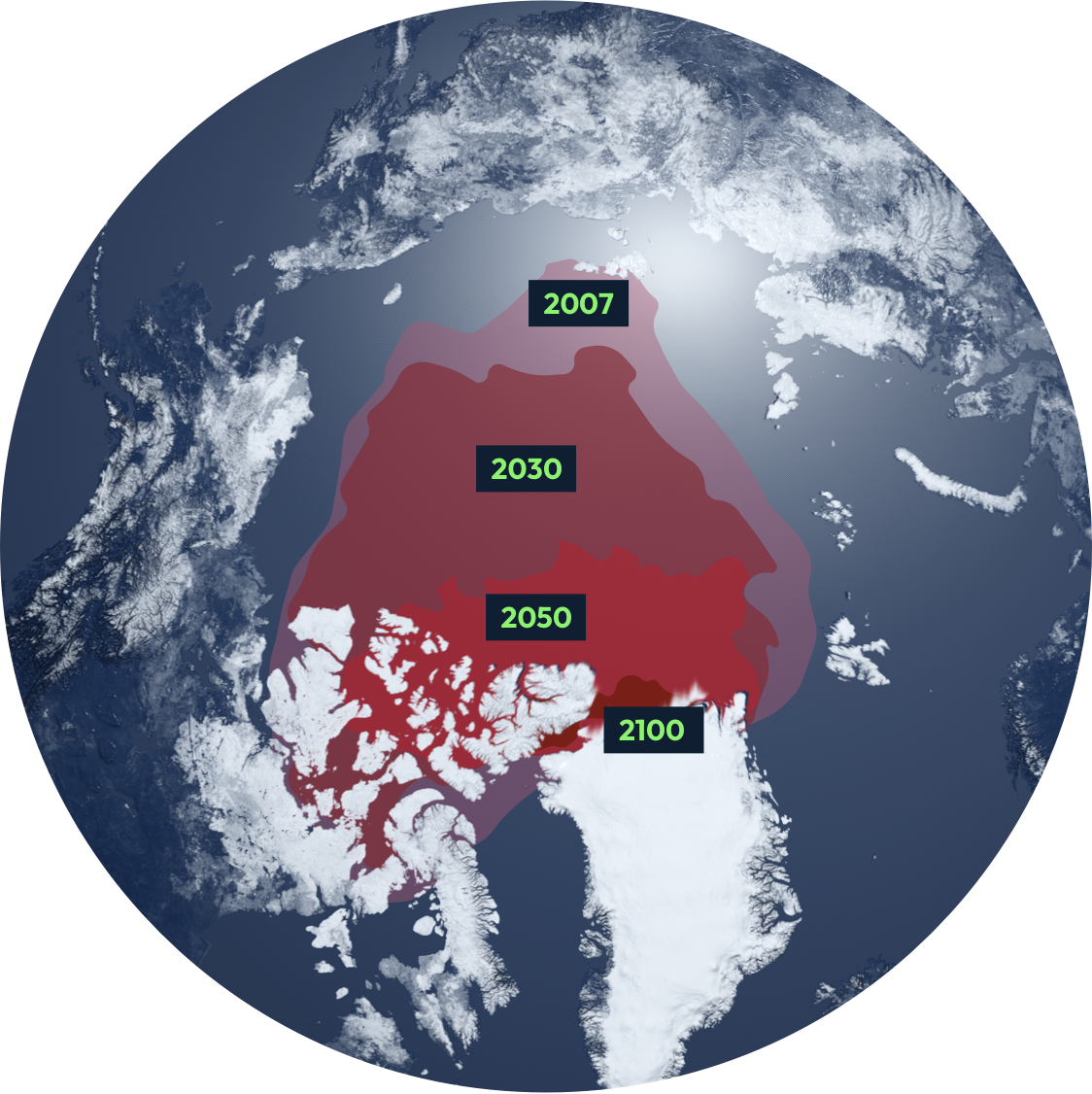International Shipping
Once the barrier-to-entry posed by the sea ice is gone, the Central Arctic Ocean presents a significant time-saving, and therefore cost-saving, opportunity for international shipping due to the shorter route it offers between East Asia, North West Europe and the US East Coast.
Ecological impacts, and the consequential risks, are presented by all types of cargo vessel including container, dry bulk carriers, tankers, multi-purpose and general cargo ships. And while the range and scale of ecological impacts per vessel is of concern, it is the overall cumulative impact of the sheer number of vessels transiting the Arctic Ocean that puts at risk the region’s ecosystem.
With the scale of cumulative risk posed, it is anticipated the majority of ship-owners and shipping operators will choose to act responsibly in alignment with their global sustainability goals – and commit never to transiting any area of the Arctic Ocean (as some have already). And it is envisaged that any operators insisting on accessing the Arctic Ocean will be obliged to using designated shipping lanes, static and dynamic controls (eg reduced travel speeds and ‘anti-strike’ marine-life monitors), the lanes to be located immediately to the south of the Central Arctic Ocean.


